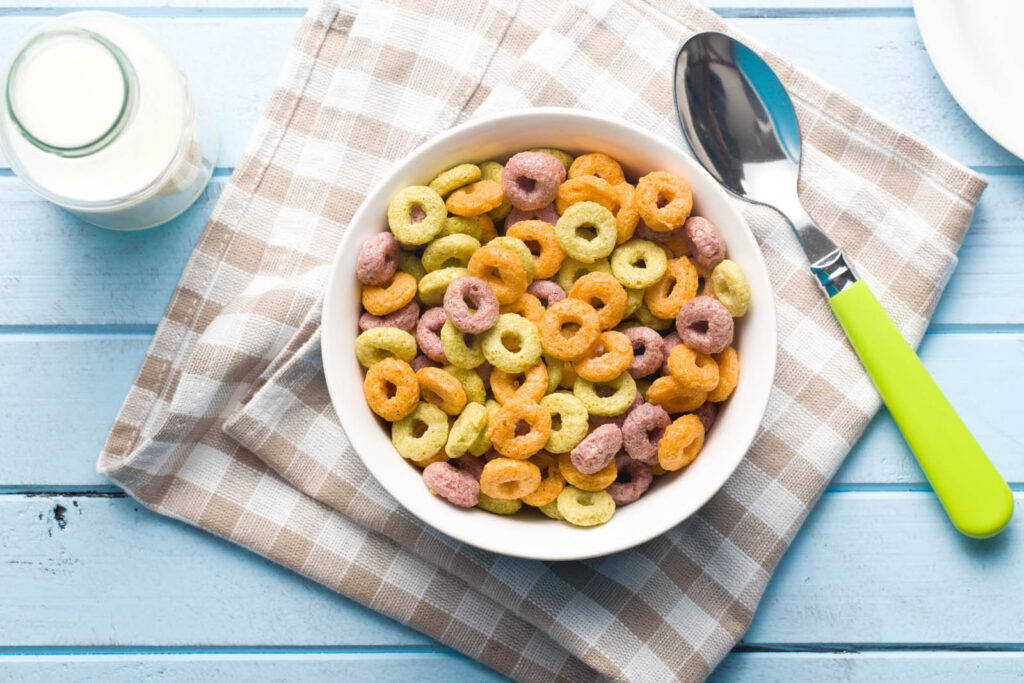
overview
Brands often seek to appeal to new, younger demographics by transitioning into similar categories seen as more relevant to this younger target. But how can brands, especially one well-known for living in a consumer-packaged goods (CPG) category, successfully transition to an adjacent category without alienating current consumers?
This was the challenge faced by our client, a popular cereal manufacturer. They were interested in venturing into the snacks category to counteract increasing competition and to expand their audience. Specifically, they wanted to target tweens with a new on-the-go snack item. Prior research pointed to the fact that the new snack idea was feasible and profitable, but the team needed to understand potential improvements and determine if the product prototype performed as well as the previously tested idea.
To understand performance of the snack product prototype, C+R Research was selected as the research partner, leveraging an ongoing community of cereal purchasers and conducting an in-home usage test with two flavors among parents and tweens.
THE PROBLEM
Our client was in the midst of developing a new product and, while tactical research showed potential, there was a lack of sensory research to support the launch. The launch strategy for this new product was to target tweens, but parents had to “buy into” the product, given they were the primary purchasers. Product testing with both parents and tweens was instrumental to truly understand potential, both in terms of audience consumption and purchase interest.
Our challenge was to create a cost-efficient in-home usage test that could combine parent and tween findings while taking into consideration language preferences and survey-taking behaviors among these two targets.

OUR APPROACH
To help our client determine the potential of the new snack product prototype, we leveraged an ongoing community of cereal purchasers for a sensory in-home usage test. Given that the intended audience for the new snack product was tweens, it was critical to understand product performance among this target. However, parents also played an important role in the test, both because the client wanted to avoid alienation and also because they wanted to consider ratings among this audience, which has the purchasing power.
Respondents were pre-recruited online to participate in the in-home usage test. Given that we had pre-profiled respondents when they initially joined the community, we were able to target households with tweens when recruiting for the in-home usage test. To qualify, both a parent and a tween in the household had to agree to participate in the test.
When developing the survey instrument, it was important to adjust standard metrics to accommodate the two different audiences – parents and tweens. Based on past experience, we know that the tween survey had to be short to keep the audience engaged, and the question wording and scales had to align with how this audience speaks and thinks. Leveraging the expertise of our YouthBeat® team, we developed a survey tailored for the younger audience, which included fewer questions, shorter (more direct) question wording, and compact scales.
Additionally, to prevent drop off from the post-usage survey, we developed a survey in which respondents could stop at a certain point and resume taking the survey when it was most convenient – this allowed for differing “free time” blocks between adults and tweens.

The result
As a result of the in-home usage test, we were able to provide support for the launch of the new snack item. Additionally, we were able to recommend prioritization of one of the two flavors tested since it met all diagnostic thresholds needed for launch.
Because the quantitative survey used scales and wording that were appropriate for both a tween and an adult audience, our in-home usage test supported the idea that targeting tweens was a profitable strategy and did not alienate potential adult consumers. Furthermore, the in-home usage test also provided information on a potential formula improvement for the non-priority flavor to further enhance the product prior to launching a line extension.


proven experience
related case studies
